Divers & Dive Watches, Everything You Need To Know
Exploring what divers really need and the relevance of a good-old mechanical watch underwater…
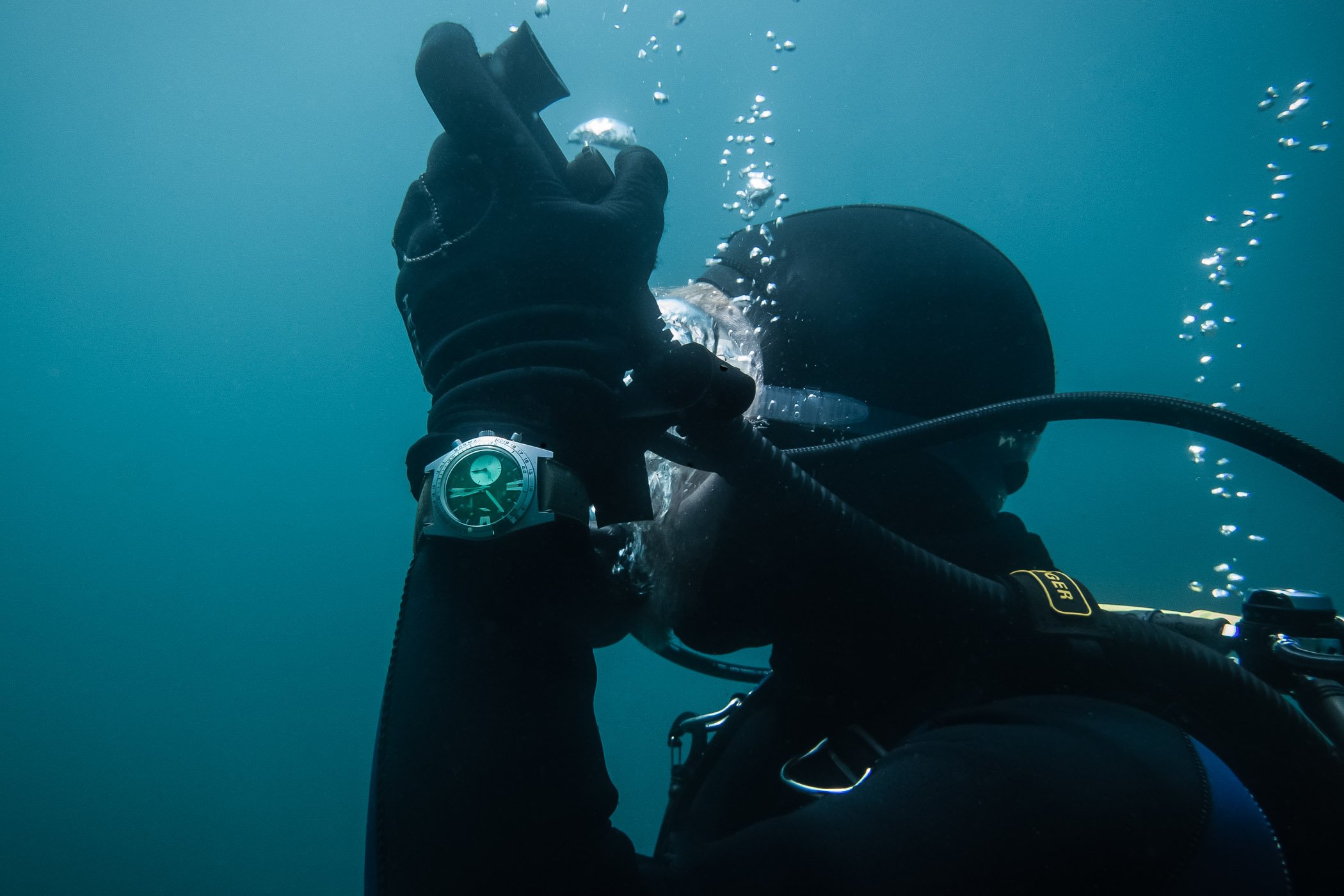
Going underwater exposes our bodies to an environment that is not designed for humans. Humans cannot breathe underwater like fish, cannot swim like fish and cannot seek their food like fish. We are “invading” a hostile world. In short, we are somewhere where we are not supposed to be. The dangers are countless: animals, risk of drowning, disorientation, to name but a few. The technology developed during the second half of the 20th century lets us fathom and remain in previously unreachable depths. This technology, though, has its limitations and risks. Once the diver clears all the obvious dangers, they still have to fight the invisible and life-threatening risk of decompression sickness (DCS). This leads us to the question all watch enthusiasts might have… What do divers really need underwater when it comes to timekeeping instruments? How relevant a mechanical dive watch is nowadays, compared to a diving computer?
This article was written by Tassos Tzanos. “Born in Piraeus, Greece, surrounded by the sea, in 1992, I followed my longtime friend Nikos Tzanoiudakis’ school and started exploring under the surface. Whilst engaged in pursuing a career in business, I had always tried to balance interests between diving, cycling, tennis and photography. Love travelling and exchanging with people.”
Most underwater images were taken by our resident dive-watch editor Derek Haager. You can read his diving reviews here.
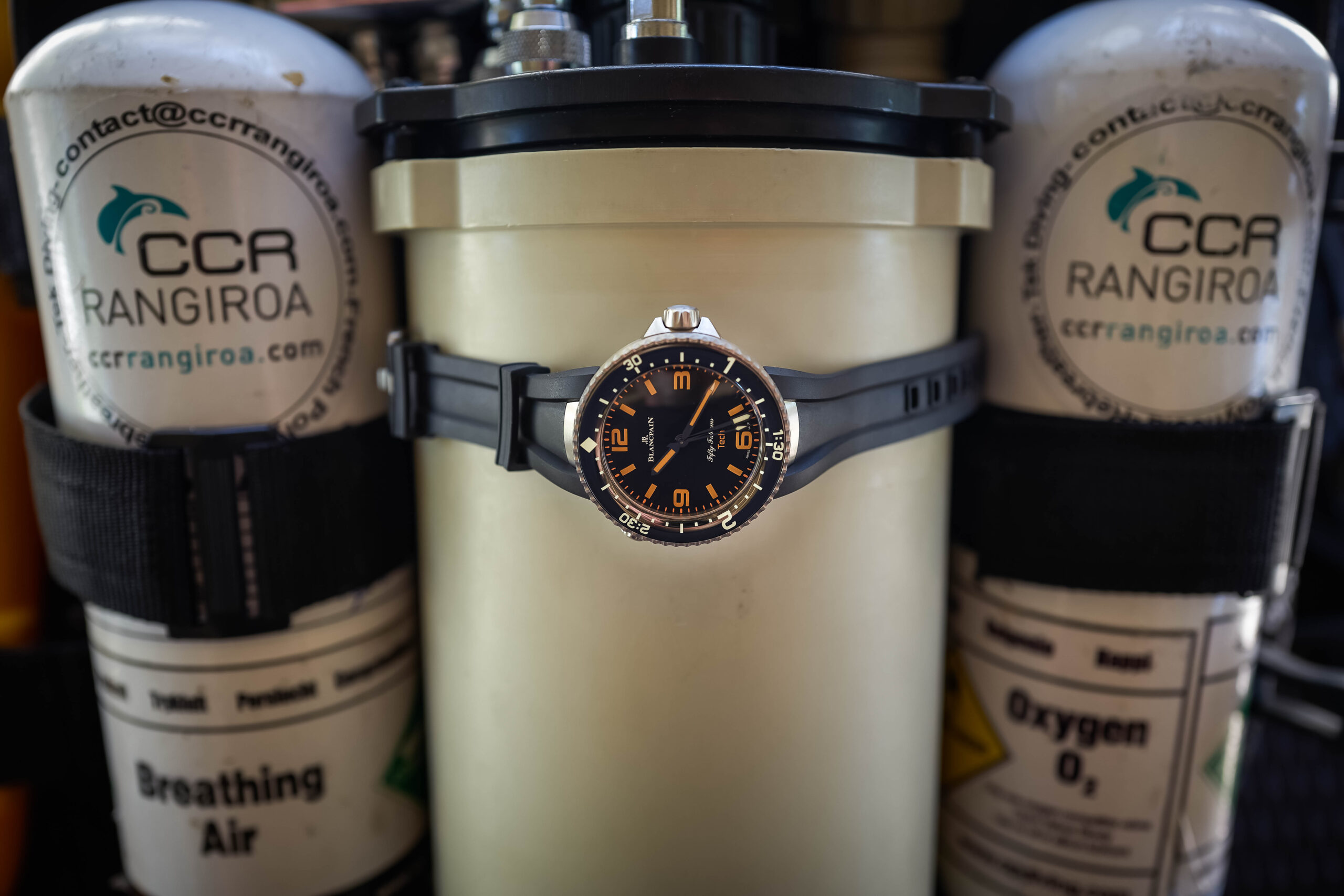
Why is diving complex?
The deeper we go, the more pressure our body withstands (add 1 bar to every 10 meters of depth). The air our tank feeds our lungs contains 79% nitrogen and 21% oxygen. While breathing, the oxygen is transformed into carbon dioxide and exhaled from our body. This is mainly contained in the bubbles that a diver expels in the deep. Since nitrogen is totally inert, it does not react chemically with our bodies. On the surface (where pressure is 1 bar), nitrogen is exhaled in the quantity it is inhaled. Underwater, where pressure increases, nitrogen bubbles are compressed and become smaller. The smaller they become (the higher the pressure, the deeper we go), they travel from our blood into our body organs and silently stay there. Nitrogen is dangerous, and therefore, we have to get it out of our system. If a diver has too much nitrogen dissolved in the body and reaches the surface without discharging critical quantities, several consequences can occur, ranging from mild to severe and even fatal: nausea, muscular weakness, joint pain, neurological issues that could lead to paralysis etc. The speed of ascent is also important. If you go up too fast and the nitrogen bubbles expand and are not discharged from your system, you risk serious DCS and pulmonary embolism. If your ascent is too slow, and you keep diluting nitrogen in your blood, you increase its presence in your system.
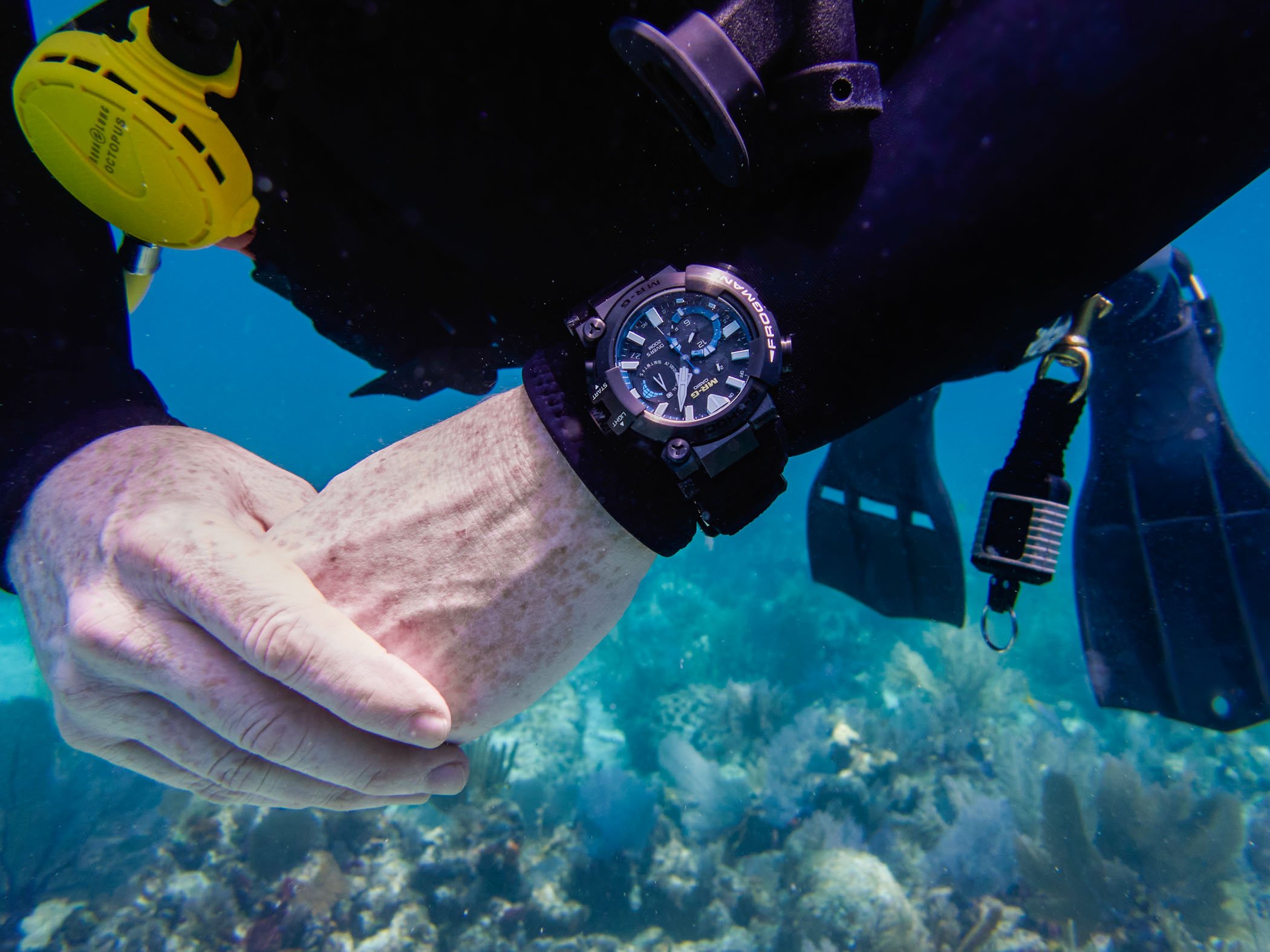
Science at the service of diving
In the early days of diving, many people experienced these problems, triggering doctors to start exploring this new field. It was not until the mid-1950s when Robert Workman, using the decompression ratio established by J.B.S. Haldane in 1905, divided the human body into different sections (tissues, organs). He defined the time needed for each body part to absorb nitrogen until saturation. Another approach, that of the silent bubbles, was also developed based on Haldane’s studies, resulting in the second school of decompression theory.
This was a breakthrough. For every depth and the time spent at it, divers could calculate the tension of nitrogen in each tissue and consequently estimate if it was safe to surface at a speed that allowed dissolved nitrogen to discharge. If not, they had a depth ceiling that they were not allowed to reach before making a decompression stop (deco). This sophisticated term stands for staying at a certain depth for a defined time to let our body expel dissolved nitrogen from our system and to help our organs reduce their saturation to nitrogen to a level that is not critical before reaching the surface.
From science to practice: the “good old days” 1960s to early 1990s
The drawback of this breakthrough was that a diver could not perform these calculations underwater. Therefore, simplified versions of these calculations were put into diving tables, informing the divers of the maximum time they could stay at a given depth without requiring a decompression stop. In case of extending their stay underwater, they also advised the recommended deco stops, for example, 2’ at 6 meters and 4’ at 3 meters. Leading diving institutions always recommend a safety stop of 3’ at 3 meters, even if the dive is within the limits of non-decompression. Before recreational diving became popular, professional organisations, like the military, compiled their own tables. Each diving team had to plan the dive with precision in order not to exceed the NDLs (max additional time – in minutes – to spend at current depth with no need for deco stop). And as the tables indicated only one depth, this was considered the maximum to calculate the time to stay there. Thus, in the name of safety, the dive was “penalised” because we never stay at the maximum depth all the time. To simplify the tables and make them fit in a card that the diver could use, the depths were every 2-3 meters and the minutes every 5’.

Was the dive at 23 meters for 31 minutes? But in reality, the tables indicate it was at 25 meters for 35 minutes.
The diver needed three lifesaving instruments: an air pressure gauge linked to the breathing apparatus to inform about the remaining air, a depth meter and a watch. The watch, the depth meter and the portable tables were used to calculate the time at the max depth, the speed of ascent and the time required for decompression (safety or deco stop). As an indispensable sports tool, the diving watch evolved together with the technology of the times.
In the 1920s, the first waterproof cases were developed by Rolex, soon followed by Omega with the Marine (probably the earliest true underwater watch). Later, in the 1960s, when the tables were introduced, rotating bezels were added to the watches. These could only turn counterclockwise to avoid – in case of unintentional rotation – adding diving time and thus result in an increased risk of DCS.

Beyond the 15’ zone of watches made for recreational (non-commercial) dives, the consecutive markings on the bezel appear every 5’. This format is driven by the tables (Image 1), as the markings on time to stay at depth are every 5’. Not for the first quarter of the bezel, though, where the markings are every minute. This is because after completing the ascent to the deco or safety stop, the diver had to rotate the bezel to measure the time of the stop, which could be 3, 5, 6, 9’, etc.
In 1996, the ISO 6425 outlined the specifications of a dive watch to ensure that all the lifesaving features were present. These are the features that most fascinate us about modern diver watches: a strong case to withstand water pressure, a screw-down crown to avoid water penetrating the case, luminous hands, hour markings that are legible in dark environments, a minutes hand that is clearly differentiated from the hours hand, and an indication that the watch is running visible at depth – most of the time thanks to the mandatory luminous insert on the seconds hand.
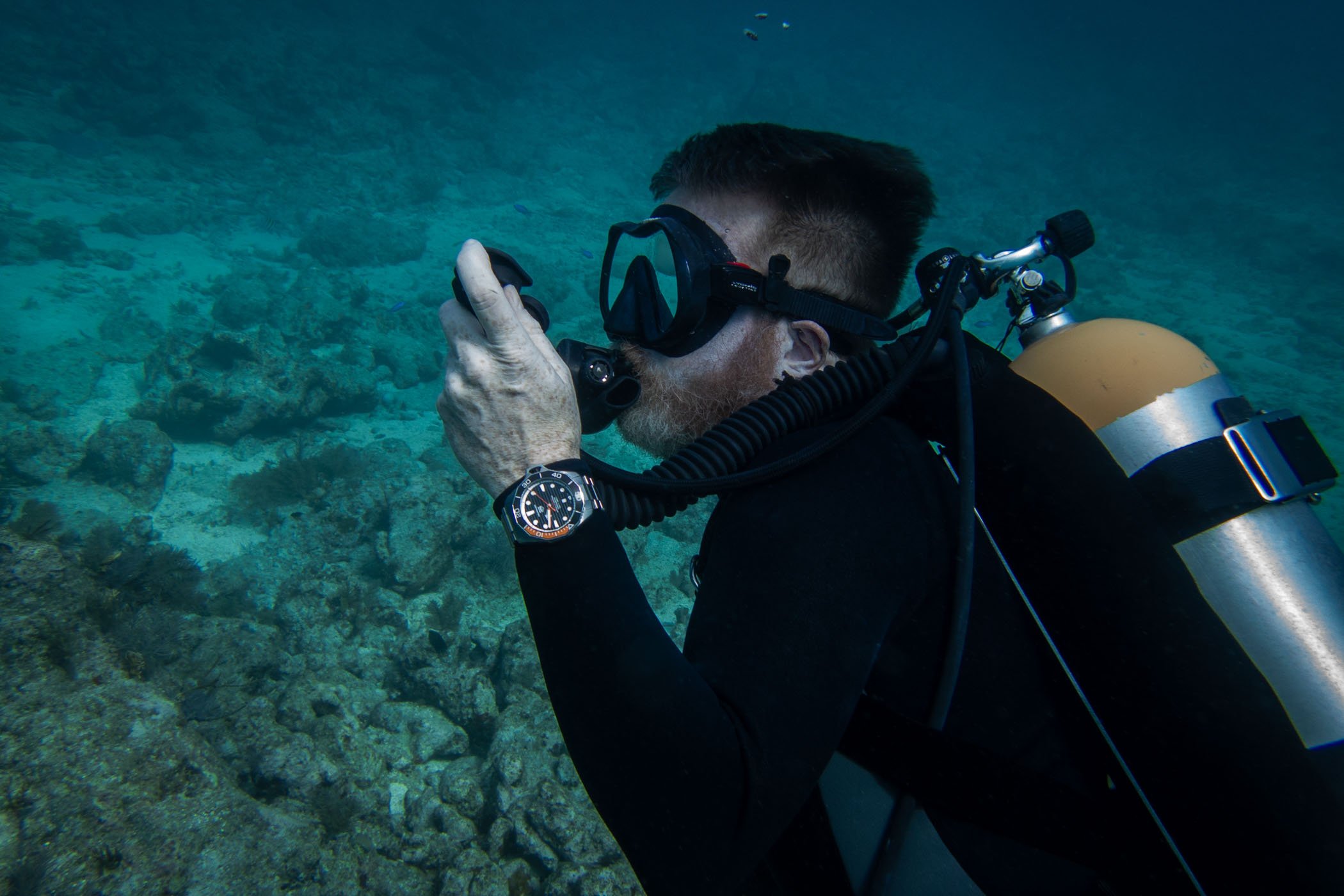
Ever wondered why diver’s watches are less elegant than your dress watch? Here’s why: divers need fast, legible information, and the design is adapted to these key requisites.

The quartz revolution democratised the dive watch. In the early 1970s, the first diving schools popped up; diving was no longer an activity for the military or professional sea explorers. Seiko and Citizen created several flagship models that were accessibly priced to allow the general public to start exploring the realms of Poseidon.
From science to practice: from the 1990s to nowadays
Diving computers were developed alongside the ISO 6425 standards. If we go back to the Haldane models and their evolution by Workman and Buhlmann, we can generate more accurate results regarding the nitrogen dissolved in our system and whether we’re allowed to surface from our depth or if we need to have a mandatory deco stop. The benefit is more diving time without increased risk of DCS. Divers may also choose the threshold they want and alter it according to their experience, age, etc.

A dive computer performs all these calculations every few seconds. A pressure gauge meter measures the pressure and calculates the theoretical tension of nitrogen and the saturation level in each bodily compartment. It then calculates the targeted final nitrogen tension allowed and, thus, the minimum depth the diver can reach if he’s not able to immediately go to the surface (the mandatory decompression stops).
What concerns divers underwater
In the “good old days”, diving was laborious. Watch, gauge meter, tables, and air pressure had to be checked quite frequently to ensure that the diver was in the comfort zone of the education and experience received. Some time was left for enjoying the dive, which should have been the objective. Nowadays, computers can be customized and show the information we want on a large display. For my recreational diving, I have programmed my Shearwater Perdix AI computer to monitor the current and the maximum depth, total diving time, the additional time that I can stay at the current depth without the need for a deco stop (NDL), the ceiling (in case I’m off the NDL) and the progress of my safety/deco stops. Calculations are executed by the computer on a purely theoretical basis, adapted to the profile of conservatism chosen. No sensor links the device to my body.

Can I dive today like the “good old days”?
I was tempted to do this exercise to see if old timing comes at a cost or a benefit.
Above, our resident diver Derek Haager diving with a Seiko mechanical watch (like in the good-old days…)
In white is the profile of a group dive we did last summer in Greece at a reef with a shipwreck. The first 12’ was a steep dive and sea life exploration at 20-25 meters, then over a crest, and we reached the shipwreck at 17 minutes. We explored the ill-fated MS Vera for the next 13 minutes before we ascended and performed a safety stop between 4 and 3 meters. We stayed there with the group a little longer to take pictures of the marine life, as the light at this shallow depth was fantastic. At no point was I alerted when reaching the NDL during my dive, as I was totally within the limits of my safety and comfort and finished safely with a surface GF of 53%.

Had I chosen the old-fashioned way, my dive would have been the red line (according to MN90 tables of the French Navy, Image 1 of this article), meaning that I would have missed the wreck and the fun at the 3 meters with my group. I’d also have had to surface alone, some 50 meters away from the boat, putting the group at risk; the dive master would have no choice but to end the dive at that point in order not to leave me alone. You can imagine that I wouldn’t have been very welcome to dive with them again.
And the helium escape valve?
The context of this article concerns recreational diving using air (breathing gas). Another variant of this is Nitrox, where air is enriched with oxygen to reduce the nitrogen in the mix, allowing longer stays in shallow depths. Beyond recreational diving, which has a limit of 66 meters (oxygen toxicity), technical dives can go deeper. Helium, which is inert like nitrogen, has the same effect in terms of its solubility in the blood and its penetration into our system. In air diving beyond 35 meters, nitrogen can produce a dangerous euphoria that might affect the consciousness and decision-making ability of the diver, leading to dangerous or even fatal consequences. This is known as nitrogen narcosis. That’s where Trimix, with helium in the breathing mix allowing us to reach greater depths, comes into the discussion. Since helium is expensive, it is of limited use and restricted to divers with special tech training.
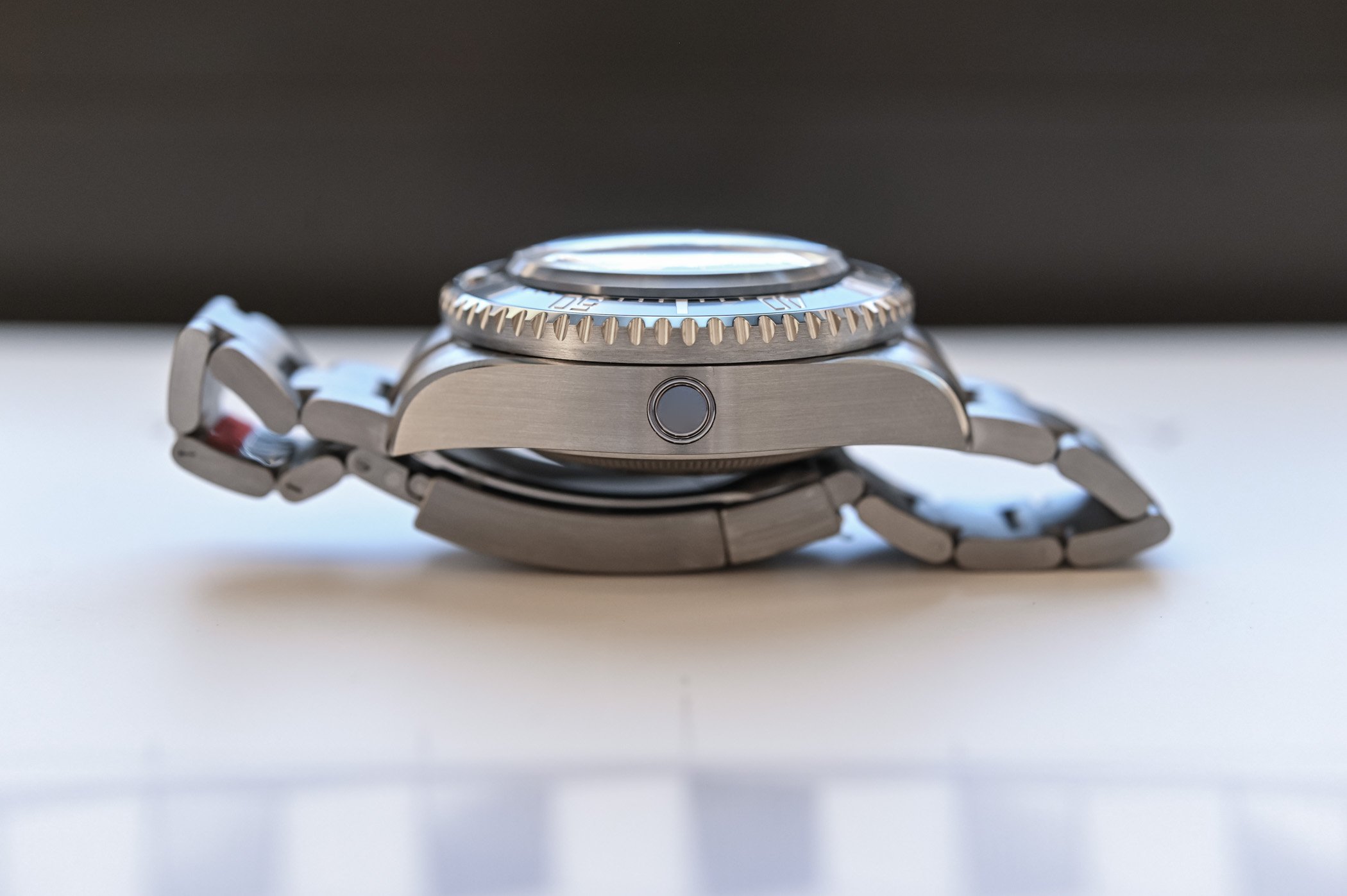
Beyond this, the last and ultimate stage of the diving adventure is commercial diving. These divers work at 100 meters and beyond for several days on projects related to the industries of oil exploration or telecommunications. As cost is less of an issue here, they live for several weeks in dry habitats filled with pressurized Heliox, a custom mix of helium and oxygen adapted to the pressure of the working depth. This is also the mix they breathe on site. Since their watch lives with them in the dry habitat, tiny helium molecules enter the watch. These watches have two things that make them different: a stronger case to withstand nominal pressures beyond those at depths of 300 meters and a valve from which helium molecules can escape during the decompression process at the end of the 28-day mission. If they don’t escape, the decrease in pressure will increase the gaseous volume and will make the valuable timepiece explode. The bezel on these watches, which are rated for 300 meters or deeper, has markings every minute.


Unlike the recreational diver, who had to calculate things underwater, the commercial diver does not have to count time. At the diving support vessel, a whole team monitors and guides him. These markings allow the diver to count the time in the dry compressed chamber when the shift has finished.
The diver’s watch today
I love the sea. Wearing my dive watch all year round keeps me connected to the sea. I remember my dives, the time spent onshore and in the water with my family, and it makes me think of the next time I will immerse my watch again into the sea.
Do I need my watch during my dives? No.
Do I put it on my wrist underwater? I certainly do. I love having it there, not as a backup to the computer; in case of computer failure, a buddy or the dive master are there to help.

Wearing my diver watch as an everyday timepiece is an appreciation letter to the good old days when diving meant meticulous study, preparation, and continuous learning in an era when information was not readily available. We were far from being perfect, but we had that incredible feeling of having mastered a complex and mysterious activity.
When I got my first CMAS certification in 1992, I was diving with a black and yellow Swatch Scuba. This is what my student’s budget could afford. You might laugh today, but this quartz movement in its plastic casing accompanied me on over 80 dives until a persistent sinus issue kept me away from the depths for some time.
Wearing my diver connects me with memories of the “good old days” when things were more difficult yet simpler. I don’t miss those days; I just don’t want to forget them.

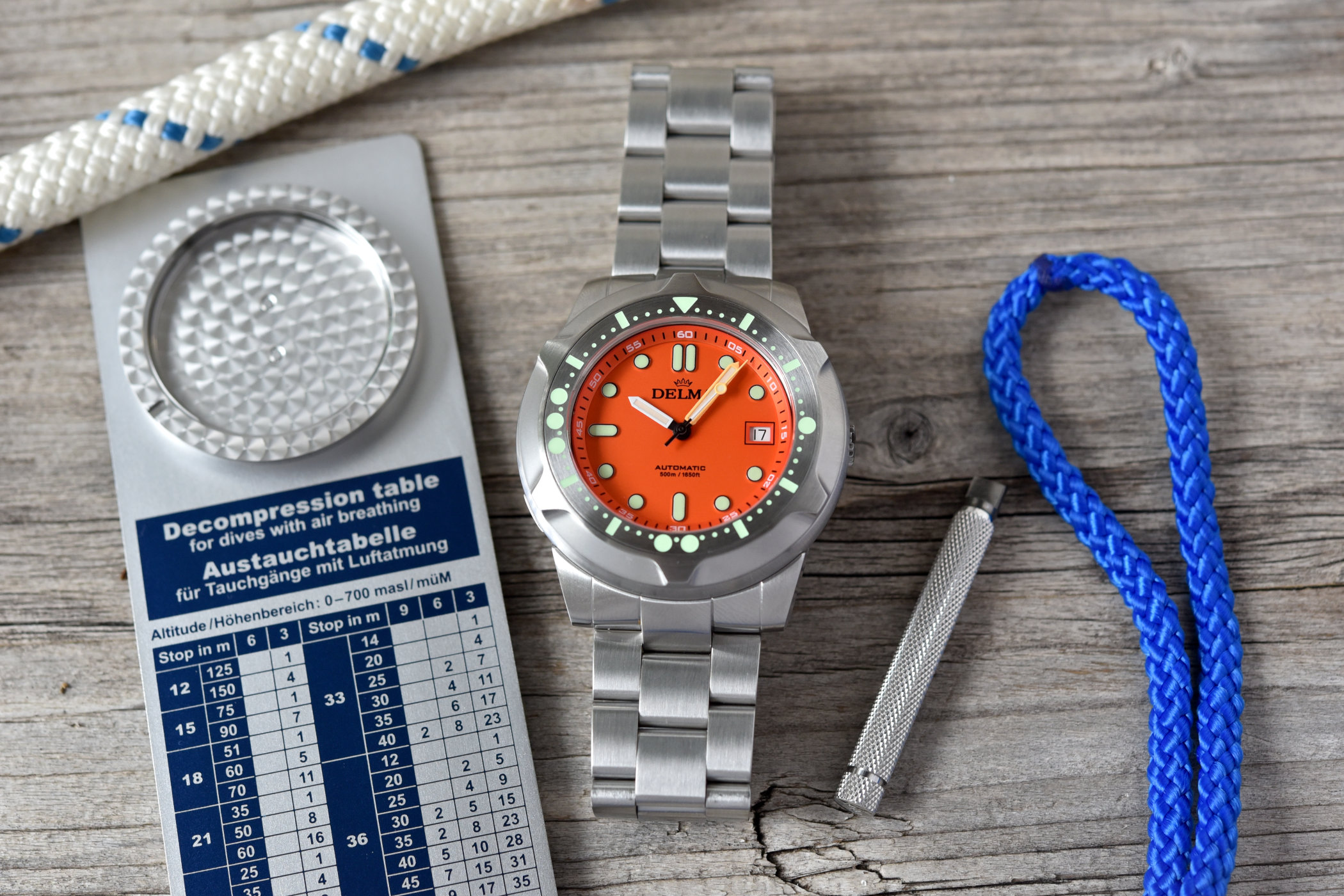
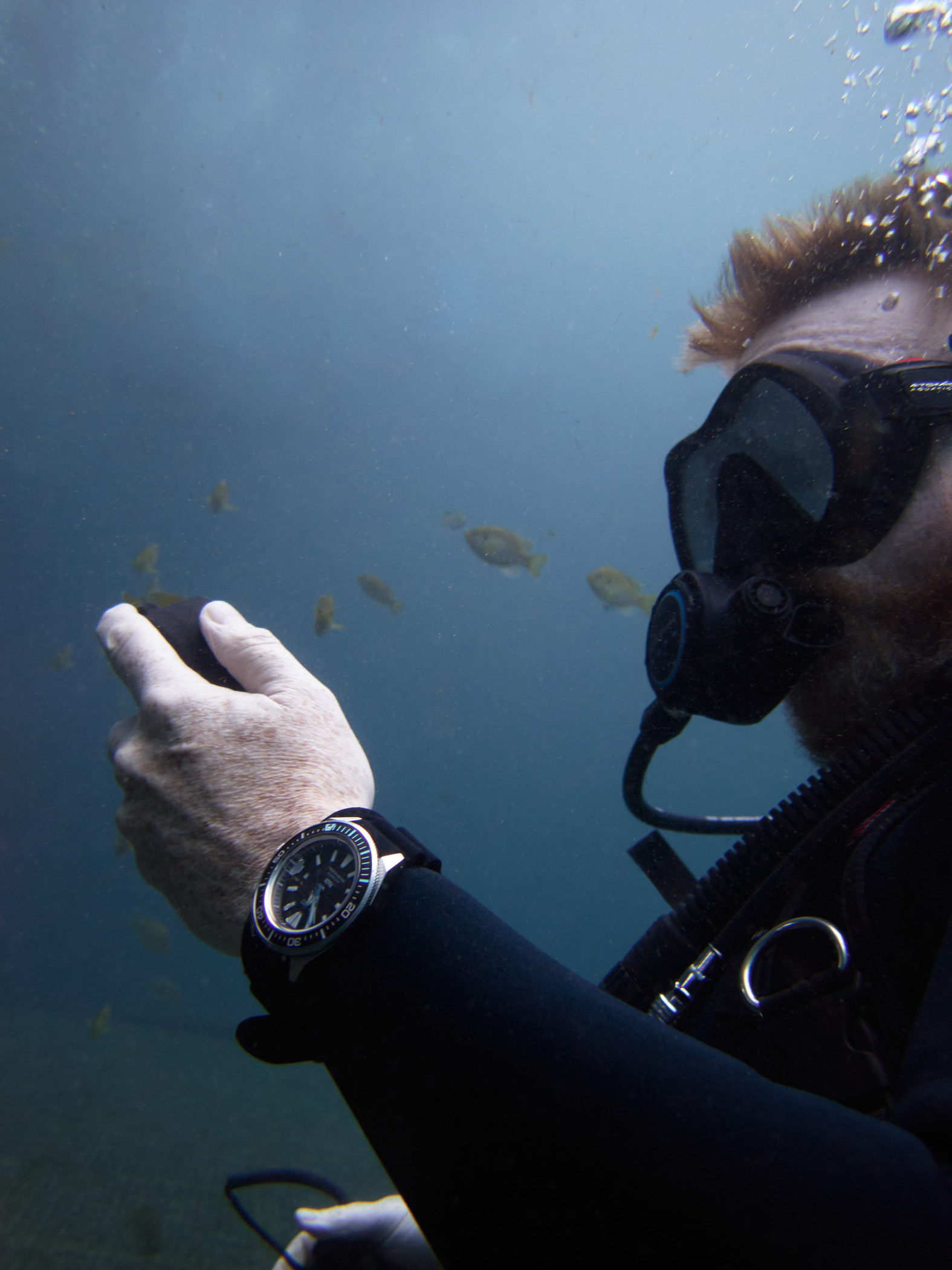
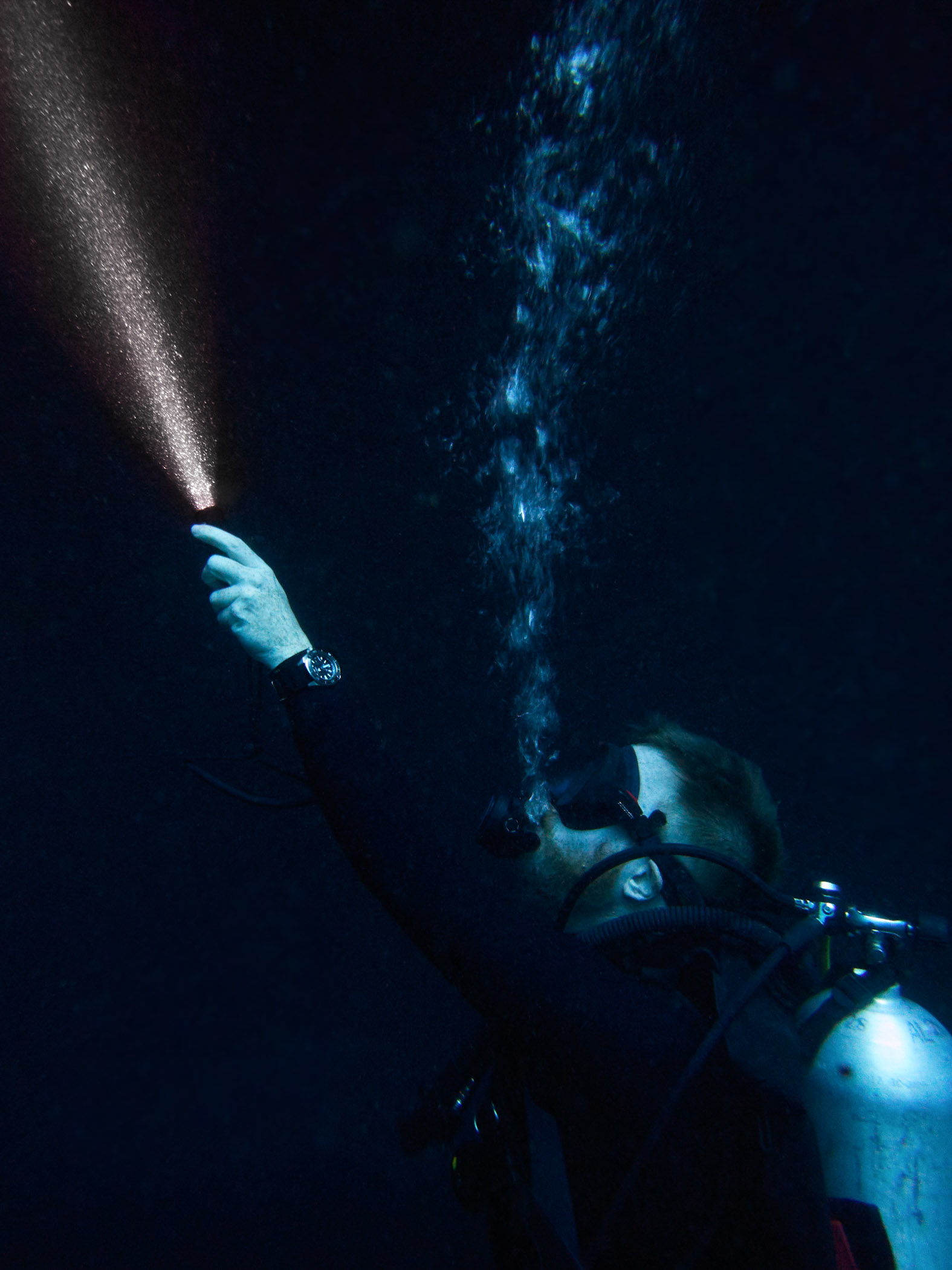



11 responses
Great article very informative, thanks!
Love the article! Been diving since ‘83 and have a large dive watch collection. Really enjoyed the article!
Excellent and a very well written article. Thank you.
I am a bit disappointed by the casual misrepresentation of the history of waterproofing watches here. Rolex didn’t invent waterproof cases at all. They maybe were the first to market it successfully, but a lot of companies and people preceded them. Little known fact: The Tavannes waterproof watch, made in 1915-1917, was called the Submarine.
The first waterproof cases were developed by Pettitt & Fils for the 1850’s World Fair in London. Since then, Tavannes, Ezra Fitch, Francois Borgel, Gilbert Dennison (the inventor of the modern screw down crown – 1915) have all had waterproof watch cases.
Thank you for the enjoyable trip down memory lane. I began my diving journey about the same time as you did on about the same budget! “My” first dive watch was a borrowed Citizen Aqualand before dive computers were a thing, at least in my world. My one and only saturation dive was before I could afford a Sea Dweller or Ploprof so I wore the Aqualand once again with no explosion. These days, my divers still get to dive but only for fun although I look forward to using my new Tudor FXD for underwater navigation!
I have the Aquastar,first picture in the article,without the chronograph function.
Deep star 2 it’s called, and it such a good watch,great size and the build quality and finishing is as good as watches that cost several times the price.Very happy owner.So if you are in the market ,check that one out.
Great article. I still always use a mechanical dive watch on a dive and wearing them on shore always ties me to those dives, my profession (marine biologist) and the sea. Of course, on deeper dives, air integrated computers are fantastic, but in the sunny shallow, an analogue dive with no tech is very safe and rather liberating! But a couple of things – dive bezels as we know them came to market in the 1950s, developed by Blancpain or Rolex (depending on who you believe!) and likely inspired by earlier timing bezels developed for flight navigation by Longines. And no mention of rebreathers, which I only expected because of the Blancpain in the first imbedded photo!
I love diving and dive watches. This is the first time I read an article about dive watches where I can see that the writer is a real diver. Great article, honest, interesting. And I have to confess there s here a very good explanation (and easy to understand for someone who doesn’t dive) about all the pressures effect on the body when we are diving.
Great article
A big thank you to everyone that spent their time to read the article and leave a comment. Divers watches are that special element that will always fascinate the world, no matter how far technology takes human towards safety and comfort.
I’m passionate about dive watches and loved the article, just that it was mention the omega seamster’s of the 70’s big blue first Chrono UpTo 120 mts.
Any thoughts on non screw down crowns on 100m or 300m watches?